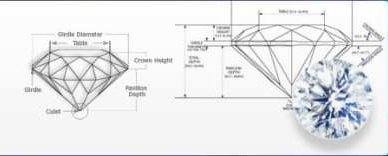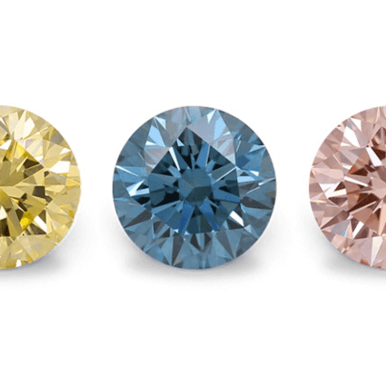Lab-Grown Diamonds vs. Moissanite

As consumers increasingly seek alternative options to mined diamonds, the market for lab-grown gemstones continues to expand. Our customers often inquire about the differences between two popular options: lab-grown diamonds and moissanite. Although both choices provide cost-effective sparkle, let's examine their unique features from a jeweler's standpoint.
Lab-grown diamonds possess the same chemical composition and crystal structure as mined diamonds on a molecular level. The exceptional hardness and brilliance of diamonds stem from their unique carbon composition and growth process. In comparison, moissanite's chemical structure consists of silicon carbide, which results in its toughness but inability to match the unparalleled hardness of diamond's crystallized carbon.
Comparison table of lab diamond and moissanite characteristics
| Characteristic | Lab Diamond | Moissanite |
|---|---|---|
| Composition | Pure carbon | Silicon carbide |
| Hardness | 10 (hardest material) | 9.25 (nearly as hard as diamond) |
| Refractive Index | 2.42 | 2.65-2.69 (higher brilliance/fire) |
| Dispersion | 0.044 | 0.104 (more rainbow colors) |
| Specific Gravity | 3.52 | 3.21 (lighter) |
| Thermal Conductivity | High | High |
| Occurrence | Man-made | Man-made |
| Color | Colorless to light yellow | Colorless to light yellow |
| Clarity | VS-SI | VS (minor inclusions) |
| Cut | Excellent to Very Good | Excellent to Very Good |
| Cost | $$-$$$$ | $-$$ |
| Resale Value | Higher | Lower |
| Carbon Source | Atmospheric carbon | Not applicable |
When evaluating optics, moissanite’s higher refractive index produces more colorful fire than a diamond’s. While beautiful, perceptive clients may notice these tints veer slightly too yellow-green or prismatic at times. The subtle tones and inclusions of a quality lab-grown diamond provide a more natural-looking sparkle.
When asked, sellers can provide clients with GIA or AGS grading reports, thus giving assurance that their diamond or moissanite meets the highest standards.
GIA grading characteristics for lab diamonds and lab moissanite
| Grading Characteristic | Lab Diamond GIA Grading | Lab Moissanite GIA Grading |
|---|---|---|
| Color | D-Z (colorless to light yellow) | D-H (colorless to near colorless) |
| Clarity | FL (flawless), IF (internally flawless), VVS1-VVS2 (very very slightly included 1-2), VS1-VS2 (very slightly included 1-2), SI1-SI2 (slightly included 1-2), I1-I3 (included 1-3) | VS (very slightly included) |
| Cut | Excellent, Very Good, Good, Fair, Poor | Excellent, Very Good, Good, Fair, Poor |
| Polish | Excellent, Very Good, Good, Fair, Poor | Excellent, Very Good, Good, Fair, Poor |
| Symmetry | Excellent, Very Good, Good, Fair, Poor | Excellent, Very Good, Good, Fair, Poor |
| Fluorescence | None, Faint, Medium, Strong (blue more valued) | Faint or none |
| Table % | 53-63% | 54-57% |
| Total Depth % | 58-63% | >58% |
| Crown Angle | 34° | 30-35° |
| Pavilion Angle | 40.6°-41.8° | Not graded |
| Girdle | Slightly thick — slightly thin | Slightly thick – slightly thin |
| Culet | None, Pointed, Slightly large | Pointed |
Current demand data for lab moissanite and lab diamonds
| Category | Lab Moissanite | Lab Diamonds |
| Market Size Projection | $638 million by 2028 | Over $20 billion by 2030 |
| Growth Rate | Rapid | Strong but slower than moissanite |
| Key Growth Factors | Price point, eco-friendly appeal | Eco and ethical appeal, “real diamond” marketing |
| Primary Market | Bridal/engagement rings | Bridal/engagement rings |
| Secondary Market | Fashion jewelry | Fashion jewelry |
| Consumer Positioning | Diamond alternative | Eco-conscious diamond alternative |
| Price Point | More budget-friendly | Lower cost than mined |
Undoubtedly, the affordability of moissanite makes it appealing to the market, while lab-grown diamonds provide an alternative option at prices still achievable compared to natural diamonds. Additionally, their ability to retain value brings peace of mind to clients for the future. For many, this mid-range pricing strikes the perfect balance between affordability and investment protection.














